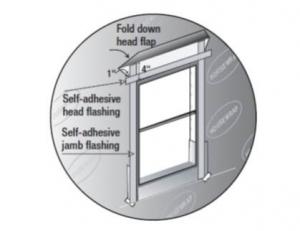After mating these termites locate a new breeding site and create another colony spreading infestations throughout multiple locations.
Insulating around windows and doors where termites exist.
The three common types of home invading termites dampwood drywood and subterranean are drawn to homes for different reasons.
A common sign for some homeowners is wings around areas that your home opens to the outdoors.
Carpenter ants enter structures through cracks and crevices around windows and in foundation walls through heating or air conditioning ducts where tree branches or utility lines contact a structure and through ventilation openings in the attic.
Another sign to look for is difficulty with windows and doors sticking or bubbling paint.
Any wood that comes into contact with your home s exterior may create an opportunity for termites to infiltrate your home s interior.
Termites feed on cellulose an essential component of wood.
Termites aren t limited to wooden delicacies inside your home either.
Experiencing a termite swarm is the 1 sign that your property has a termite problem.
Some ants such as fire ants solenopsis invicta and big headed ants pheidole megacephala will often bring dirt into homes in an attempt to nest in the walls of the structure.
This could be a window door vent or small crack.
In the late 1800s primitive insulation could be comprised of a number of mundane materials such as newspaper wood shavings corncobs and even seaweed.
Decks patios porches tree stumps sheds and garages are also termite hotspots.
Termites can tunnel through the walls.
Serious infestations that are left unchecked can result in even more dramatic damage.
But we rarely talk about how.
Subterranean termites will search out food sources that exist above ground in addition to their more readily available food supplies.
Most dampwood and drywood termites live inside the woods they eat while subterranean termites mostly live in the ground and venture to and from the wood they consume back to their underground colony.
Swarming termites are attracted to light and are often found near windows doors vents and light fixtures.
Joists can be weakened and you can experience damage like sagging floors shifted window and door frames peeling paint and more.
The effects termites can have on your home s insulation when we talk about termite damage we usually talk about damage to the wood in your home.
They nest in wood that is moist or has been previously damaged by water or termites.
Though the collection of dirt and debris around doors and windows is a common occurrence the consistent buildup of these materials is typically a sign of a pest problem.
Winged termites are often the first sign of a subterranean termite infestation.
A friend reopened sealed pocket doors on the top floor of his 1900 triple decker in boston recently and from inside the walls along with the pocket doors came shredded paper.
This means that a colony of termites might be calling your house home.
Winged termites are highly attracted to sources of light and are most active in springtime.





























